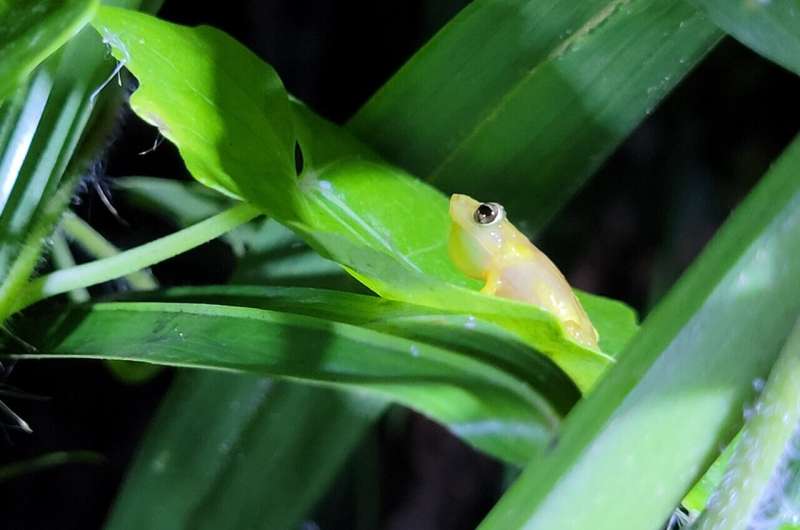Discover how modern portfolio theory, a widely used financial investment strategy, can be applied to natural resource management to help protect the endangered coquí llanero frog in Puerto Rico. This innovative approach may offer valuable insights for conserving other species facing uncertain environmental challenges.

The Economics of Saving Nature
The tiny, threatened frog called the coquí llanero faces a dire situation. This species is found on the northern coast of the island, but the critically small population range curves around three small freshwater wetlands and they are alone on that part of the coast.
In contrast, researchers at the Southeast Climate Adaptation Science Center have taken an innovative look into how this threat may be addressed in a new way — by adapting much of the unique characteristics of modern portfolio theory (a popular economic theory used to form investment strategies) into natural resource management. Identify the most impact and cost-effective means of investment in the conservation of coquí llanero, perhaps other endangered species.
Managing Risk from Investment Diversification
A number of us have probably used modern portfolio theory to build a conservative retirement investment portfolio. At the heart of it, what we want to achieve is a balanced investment portfolio — where our assets are diversified and our investments are such that various portions perform differently depending on market conditions. For instance, a mixture of more risky stocks and safer bonds might offer a harmony of greater rewards and reduced dangers.
Natural resource managers handling the coquí llanero are faced with a similar dilemma of investing in new conservation objectives, and not knowing what the future looks like Using this ecological system as a stage, the researchers applied modern portfolio theory to identify interventions that could diversify conservation risk for the frog species. It would also involve tactics such as buying new parcels of land for additional habitats, and relocating the frogs to conserved lands.
Developing Science-Based Strategies for Targeted Conservation
The researchers built models that considered multiple factors among them current protected habitats, rising sea levels in the future and temperature and precipitation changes predicted. They also added in different levels of funding, which would reflect the financial limitations many natural resource managers operate under.
The results of the study reveal that just using solely on established reservations may not be sufficient in dealing with the climate threats the coquí llanero might face into next century. Instead, the researchers found that purchasing new land and translocating the frogs may be a more cost-effective alternative despite higher costs. Remarkably, the models also indicated that additional populations of coquí llanero will be able to inhabit eastern Puerto Rico in a way that may revolutionize its conservation.
Using these methods, natural resource managers can take a more evidence-based and deterministic approach to spending their limited resources on the restoration for some of the highest biological returns in the area.
